Showing top 0 results 0 results found
Showing top 0 results 0 results found

Customer-centric is a trendy word, but you often only get generic and superficial knowledge about the topic.
In this guide, we'll tell you the whole story of customer service for the new year and beyond.
We'll cover the subject from our own perspective at LiveChat, and we'll reveal some of our highly guarded secrets in the process!
Let's dig in!
What is customer service?
Customer service is the connection you form with a consumer, by what you say and do, through branding, marketing, sales, and support. Customer service starts when the consumer knows about your brand and product and ends when the consumer forgets.
Customer service can be as different as the products and personalities of the organizations that provide it. Take two well-known examples: Amazon ecommerce and Disney theme parks.
Amazon stays out of your way as much as possible. The retail giant makes it easy to buy and offers low prices by ruthlessly optimizing operating costs. Its customer support is top-notch and acts fast to resolve problems, but you’ll rarely have the occasion to experience it. The platform is designed to prevent and handle issues, so you don’t need support. Amazon doesn’t sell different products. It sells the same products differently.
Disney created a sophisticated system, guestology, to help create a unique experience in their theme parks. It even has its own terms: visitors are guests and employees are cast members, for example. Unlike Amazon, price isn’t the focus. Disney differentiates itself based on the unique product it offers, not on its prices or efficiency.
Even with examples as different as Amazon and Disney, customer service, in general, has the same set of goals:
- Offer something that customers want, need, and appreciate.
- Effectively set and consistently meet customer expectations for a particular set of products.
- Add extra touches wherever possible to exceed expectations and stand out among the competition.
Disney’s magic and Amazon’s efficiency both come from deep customer understanding and a clear strategy.
What does customer service include?
1. Branding
Branding sets the tone for future interactions. If that tone stays consistent through marketing, sales, and support, then branding benefits customer service as a whole.
However, if your tone changes, it could hurt the quality of customer service. For example, if you imply your brand is direct and to the point, but conversations with customer service agents are long and meandering, some customers will feel misled, even if your chatty support staff are friendly and charming.
Stay on brand and you'll keep your promise to customers, strengthen your brand image, and help customers remember who you are.
Make sure there are clear guidelines for creatives in your company.
2. Marketing
The promises you make in marketing campaigns and how you make them will affect how you sell and support your products. Customers will ask about promotions, advertised features, and even slogans.
Marketing should be done in a way that fits the tone and content of other interactions that customers have with your company. Marketing departments and agencies need to work closely with other teams so that customers have a consistent experience as they move through marketing and sales funnels.
3. Content Marketing
Content marketing means creating articles, guides, videos, etc. that are useful to customers while not directly promoting your products. It's a popular form of marketing and branding and is important for search engine optimization. It's also a unique way to serve customers.
Better-informed customers will make better use of your products, especially if you spend lots of time crafting accessible and useful content. It's a win-win situation where customers will positively remember who you are and what you do while also associating your brand with their own success.
4. Sales
Sales is more than transactions. Each sale is an opportunity to create a lasting connection.
The reasons for high conversion and retention rates are found before, during, and after the sales process. The way you sell should fit perfectly into the experience you offer customers.

5. Customer support
Customer support is the part of customer service concerned with responding to product questions before and after the purchase. This could be in the form of a real-time conversation by chat or telephone or it could be through email or a help center.
Whatever the form of customer support, it should match the tone and personality of all of your communication.
Customer support and customer service are often considered to be the same thing. They are not. Customer service is a broader idea that covers the whole relationship between you and your customer. Customer support is just one part of that relationship.
6. Customer success
Customer success is similar to customer support, except that it puts a larger emphasis on anticipating and preventing problems. It also involves looking for new opportunities to better serve customers.
Customer success departments are also usually given more room to work than customer support. Whereas support staff is focused on technical problems and their solutions, customer success could talk with groups from marketing all the way to product engineering in search of ways to improve customer service.
Other concepts connected with customer service
1. Customer experience
Customer experience is how a customer feels during customer service. Customer experience concerns all interactions, such as during marketing, sales, and support. It includes how the customer feels during any given moment, as well as the overall impression they have of your brand and product.
A unique customer experience makes your brand stand out.
2. Customer journey
Customer journey is the path a consumer goes through as they develop a relationship with your brand and product. This includes all the interactions a person has with you, direct or indirect, such as a chat on your website or reading an article about your product. Unlike customer experience, the customer journey is about the hard facts of that path and not about what the customer feels at any particular part of the path.
However, people often won’t follow a customer journey planned out for them by some marketing or sales department. There is the customer journey and then there is each customer's journey. When we say customer journey here, we mean all possible options. So it could include the neatly planned journey but it could also include any other possible variations.
3. Customer satisfaction
How do you tell if a customer is satisfied? You ask them. Or you observe what they do. Or both.
The American Customer Service Index (ACSI) is based on customer surveys going back to 1994. It is the generally accepted standard for customer satisfaction across many industries. Net Promoter Score (NPS) has also emerged as a popular way to measure customer service. The NPS method is much simpler than ACSI surveys and is also based solely on asking customers what they think.
However, asking customers what they think is full of problems. People change their minds quickly and often don’t even tell you the truth. So while surveys are worth using, it's also important to see what customers do, no matter what they say. For example, they may say they don't like the customer service at a specific store but still frequently buy from it.
We'll talk about both approaches as each is worth understanding and using
Ask customers what they want and pay attention to what they do – the two results are rarely the same.
What is good customer service
Good customer service is consistently giving customers exactly what they need and often doing extra to go beyond expectations. This means doing research to understand customer needs. It also means developing an effective organization to meet those needs, adding extra touches to delight customers, and still making a healthy profit.
Understanding customer needs is not as easy as it might seem. Asking customers won't always give you the right answer. Sometimes customers don't know they need something until they get it.
Other times companies simply don't ask. It's better to be on your toes and not completely rely on surveys or other approaches that assume what customers want. Let’s look at a couple of examples.
Few people want to feel panicked at a supermarket, yet “Aldi panic” is a thing. And it’s not a bad thing, either. Aldi built an experience that emphasizes speed of service and low prices, but it turns out that a sense of panic during checkout is part of the deal. Customers panic while trying to keep up with lightning-fast and mostly unsmiling employees. Customers love it, panic and all. Aldi had to read between the lines. They had to go beyond what people say to get a deeper insight that would serve as the base for a successful business model.
What’s more important, customers buying your product or customers saying they enjoy buying your product?
On the other hand, imagine asking anyone in the 90s: “Would you like to quickly buy something, without talking to anyone, and get it delivered the next day?” Most people would have said yes. Cocooning, staying at home, and avoiding people have been trends since the 80s, and technology seemed to be moving in a direction where an even deeper cocoon would be possible.
Jeff Bezos listened. Many retail giants did not. Of course, it’s easy to predict the ecommerce boom in hindsight, but the point is that Amazon identified a key customer need and then worked out the way to satisfy it. That information was available to anyone who was willing to listen to customers.
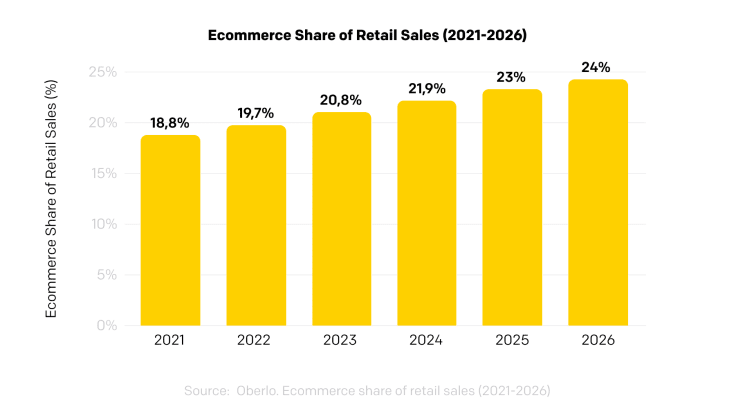
Who has the best customer service?
Companies that have the best customer service according to three different metrics:
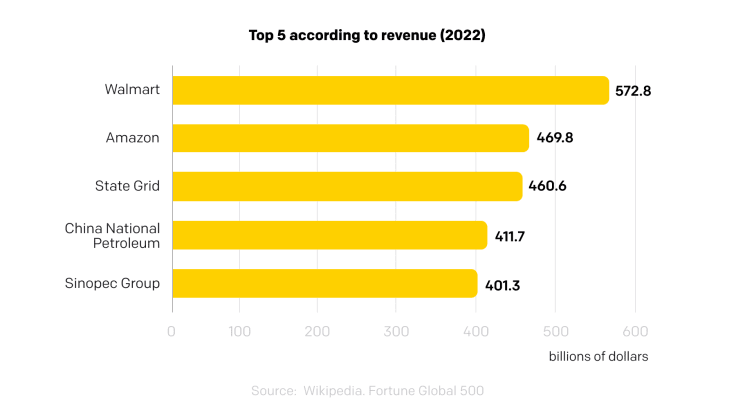
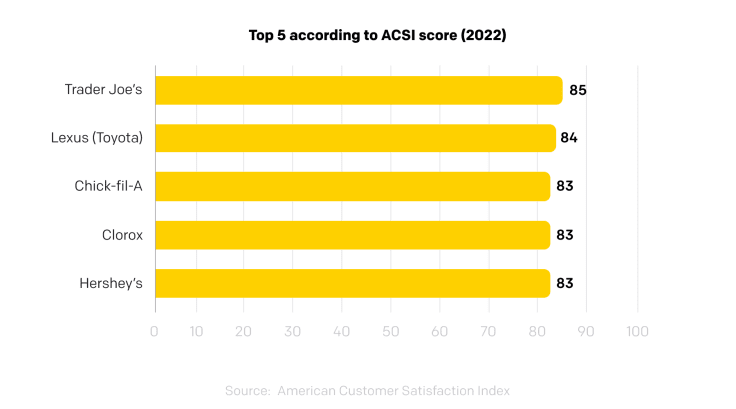
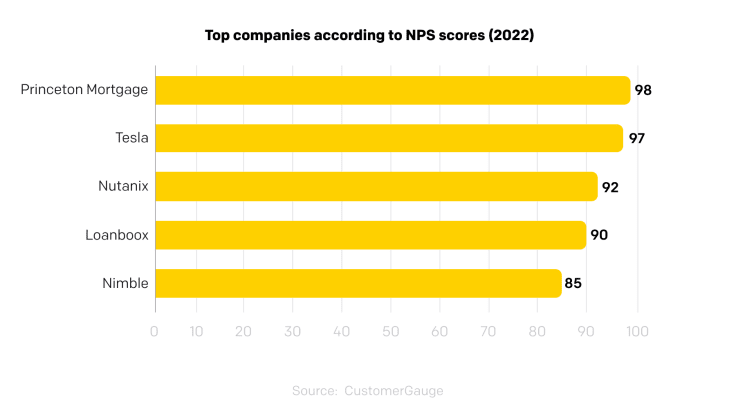
Good customer service is getting it right. It's about the result and not how you get there. Process-focused guides will always miss the point with advice like “Smile!” Sure, sometimes smiling helps. But try working in customer service in France with a big American smile on your face.
Good customer service skills allow you to understand what the customer in front of you needs, right now. Repeat that millions of times over several years and you’ll have good customer service.
Make a system that helps provide excellent customer service while still making a profit, and your business will be successful and stay that way.
Customer service starts the moment someone knows your brand, not when they start asking questions about a product they bought.
Which companies have the best customer service?
The quality of customer service is hard to measure. So it follows that anyone declaring they have excellent customer service should be treated as suspect.
We could say the company that sells the most stuff probably has the best customer service. According to the Fortune Global 500, that would mean the top 3 are Walmart, Amazon, and State Grid. But this approach is not 100% accurate.
Walmart doesn't show up in the most popular customer service rankings, even though they are effective at getting customers to shop at their stores. And State Grid is a Chinese state-owned electric utility corporation. We could dig into it but constructing power grids and its distribution system is not what most people think of when they ask about customer service.
We also don’t want to follow the ACSI or NPS scores to the letter. Survey methods aren’t perfect. For example, Walmart is not even in the top 20, even though consumers clearly think they have good enough customer service to give them the highest revenue of any company in the world, public or private.
So we've taken a mixed approach. We've chosen companies that rank highly in customer surveys that are also large and growing. We tried to choose examples that are instructive and interesting. So this is not a top 5 list. This is a list designed to help you understand how diverse and interesting customer service is.
Amazon - making it work
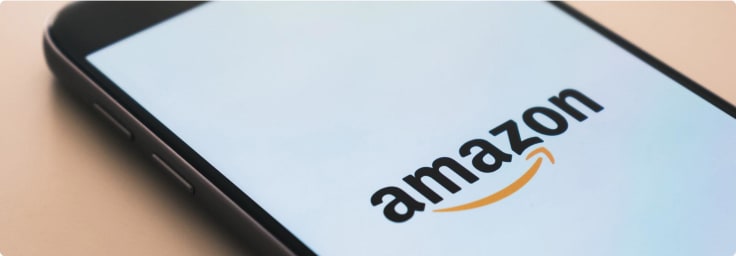
“Do it. Efficiently.” That could be Amazon's motto, slogan, and marketing tagline all in one. They prefer to say almost nothing at all and just show customers what they're about
Critics complain that they have no brand at all. Nobody is loyal to Amazon. They just buy there because of the low prices and fast delivery. These critics have a point. Amazon has few traditional brand associations – no strong emotions tying people to the brand. Maybe the strongest is the smile logo on their boxes. But “I smile when I buy stuff” would probably not fly at an ad agency brainstorming session.
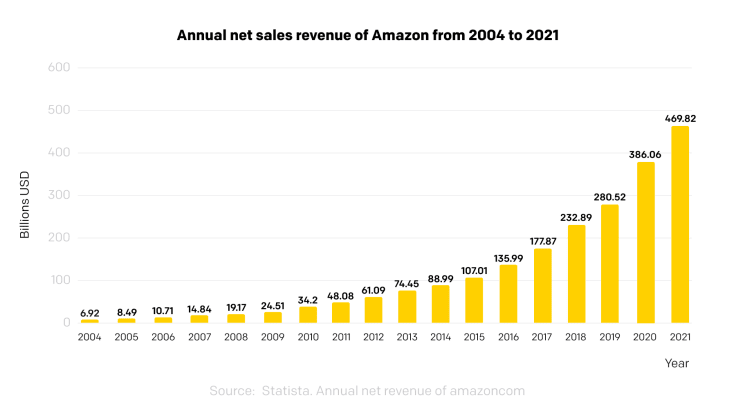
These criticisms also miss the point. The association of low prices and fast delivery is enough. It's a reputation of efficiency and getting the job done. And sure, a little smile at the end when you get to unbox your purchase a day after you ordered it. That's the brand. Amazon has created a sophisticated machine around that brand to make it one of the biggest companies in the world.
Maybe in 10 years, people will no longer want to buy from such a company. But for now, Amazon customers are satisfied with the service they receive. Despite this supposed lack of connection with customers, Amazon's retail sales are growing and its customer service ranks among the highest according to the ACSI.
Disney theme parks – the happiest best-organized place on Earth

Disney theme parks’ success comes from carefully planned operations that are based on a detailed strategy grounded in deep customer research. Surprise! There’s no magic involved.
The irony of Disney’s customer service is that it may look like the simplest mix of courtesy, enthusiasm, and smiles to the inexperienced eye. The classic 90s guide to customer service.
Courtesy is indeed one of Disney theme parks’ core values. Yet Disney’s courtesy runs deeper and comes from their own advanced system of understanding and serving customers – Guestology. Quality standards, delivery systems, and more complex-sounding words lead Disney’s customer service toward its happy ending.
It all might sound confusing, but the main point here isn’t explaining Disney’s customer service strategy. It’s to show how complex and detailed the planning stands behind what we all learned to call Disney magic.
To provide an outstanding customer experience, Disney analyzed the customer journey and experience from top to bottom. It made specific improvements based on research as intricate as customer facial expressions at different points in the park. This research led to changes such as a special system to help guests remember their parking place and areas to sit and relax where guests started feeling tired.
Everything you see, smell, and touch in Disney theme parks were planned to fit your customer journey and improve your customer experience. Some call it magic, we call it a solid strategy.
Customer service can be as different as the organizations that offer it.
Costco – Deal hunting with an exclusive feel

Costco combines the prestige of upscale shopping with the excitement of finding great deals at a second-hand store. It wraps that feeling in a consistent experience across stores, even internationally, with a friendly and competent staff.
Costco perfectly targets what turns out to be a large group of people – those with money to spend who also hate feeling like they spent a penny more than they had to.
To offer customers the best deals, Costco minimizes costs across its operations, such as building skylights into their warehouses to save on electricity for lighting. It also doesn't advertise, at least not in the traditional sense of buying ads from outside media companies on the radio or TV. The only way to get access to those deals is to buy a membership – yet another smart way to lower prices and add an exclusive feeling to shopping in a warehouse.
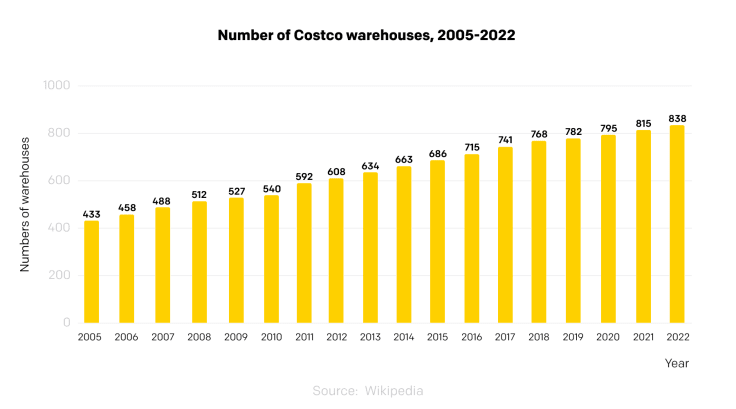
Yet Costco isn’t cheap. The retailer invests where it counts, including in its employees. While many companies in the sector pay minimum wage and have shaky relations with employees, Costco regularly ranks highly as an employer. Providing exceptional customer service pays off. Just because prices are low doesn’t mean that the experience in stores suffers.
From start to finish, the experience is optimized for a target group of customers that nobody serves better. Even amid intense competition from large retailers, both online and brick-and-mortar, Costco has more than tripled its number of warehouses over the past 20 years. They also did it all without any advertising or branding campaigns, showing that there are a lot of different ways to let customers know you exist and establish a brand identity.
Aldi - You get what you bargain for

Aldi broke the patterns of well-known grocers and looked deeper into customers’ needs. Instead of delivering a comfortable experience and a wide selection, the Aldi team did their research and found a better compromise with customers. Aldi does not just serve customers, it bargains.
Aldi’s customer service is like a deal hashed out by two aggressive lawyers confronting each other across a mahogany table. Low prices? Ok, but we’ll need ugly packaging covered with barcodes for efficient checkout.
High-quality products? At those prices?! Ok, fine, but that means no name brands. Super fast service? Sure, sure, but now there’s no time to smile. Deal. Deal, deal, deal.
The result is five staff members serving smile-free Aldi panic to hoards of delighted customers. Despite the warehouse atmosphere and uncomfortable checkout experience, Aldi gets high notes in customer experience rankings.
Despite its humble beginnings as a discount corner store by the Albrecht family in Essen, Germany, Aldi has steadily taken over American and British markets while winning awards for how it does business. By delaying gratification and sacrificing the convenience customers were used to, Aldi managed to upend the market and meet the demands of people from all ages and social classes.
Lexus – Luxury perfected for a wider audience

Lexus has created a brand that communicates luxury without falling back on luxury stereotypes. It also has a perfectionist streak that leaves an impression on potential buyers and owners alike. From design to marketing to support, the company consistently treats customers “like a guest in their own home,” just as you would expect from a perfectionist.
Toyota launched the Lexus project in 1982 but didn't release the first Lexus car until 1989. The first Lexus ad showed the first model revving up its engine high enough to send it flying at 120 mph. But the pyramid of wine glasses balanced on the exposed engine barely trembled. When some parts were found to be defective after the release of that first model, Lexus flew technicians out to some owners to make the replacement easier for them. Beyond such anecdotes, Lexus has also ranked first in the J.D. Power Customer service index 17 times.
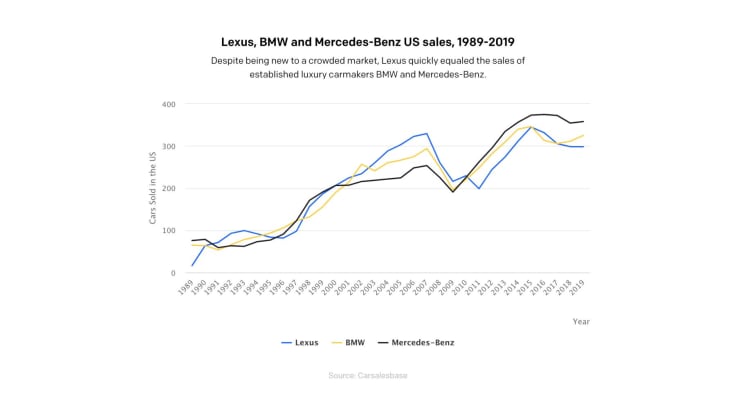
They carved out a unique niche for themselves in a luxury car market dominated by major German automakers. It did this by taking out some of the snobbery associated with luxury cars. Instead of showing their cars in front of an expensive house in the Swiss Alps, they show a diversity of people, places, and atmospheres. This is a luxury car for anyone, they seem to be saying. A message that also comes through in the price. While not inexpensive, their offer has thrown off some of the weight of typical luxury prices.
Speaking to a broad audience doesn’t mean the brand loses any character though. Everything, down to the magazine for Lexus owners, feels consistent, mirroring their long-time tagline: The pursuit of perfection. Maybe because of this, Lexus sales are consistently growing.

5 things that are hurting your customer service
1. Confusing “walking the extra mile” with stalking
People appreciate when brands exceed their expectations and deliver outstanding experiences. They just don’t want to know it’s possible thanks to being tracked all over the internet.
Younger generations hit the market with a vast knowledge of digital marketing and associated customer service tricks. They grew up with an understanding of both personalization and personal branding, being around influencers and online ads, and maybe even have their own YouTube channel.
They were born in a world where access to information requires submitting an email address, and every page and app greets them by name. Being aware of the new world order doesn’t mean they like it or want more invasion into their private lives. So show them some respect and don’t go overboard.
Show customers they’re noticed by replying to brand mentions in tweets or posts that are clearly addressed to a broader audience. Give a free phone add-on to the customer who had issues with their top-up. Personalize their experience on your website thanks to discreetly and responsibly collected data. Make sure every customer service agent is aware of the customer-centric approach.
Don’t interfere in every public conversation mentioning the brand. Friends posting on their timelines and on forums are talking to each other, not to some company’s marketing department. Don’t respond to a customer's inquiry on chat a second after they send their question. Sneak peeks at messages are supposed to make you more efficient, not spooky.
2. Turning kind, spontaneous gestures of appreciation into cold and calculated PR campaigns
Marketers and PR people often work closely with magazines, journalists, and online media outlets. The influence businesses have on the media has always been tricky. It became even more complicated when the internet brought a new era of influencers. Celebrities seemed real until they started promoting weight-loss supplements on Instagram.
Badly executed campaigns pretending to be something they weren’t have made customers distrustful and cagey. They will notice unspontaneous efforts both from marketing and customer support.
Objectives and limits should be clear, but teams communicating with customers need space for creativity and spontaneous kindness. There are benefits to being dedicated and creative instead of acting according to some pre-planned scenario.
3. Underestimating the power of word of mouth - one bad case can ruin many potential relationships
According to an Intelli survey of more than 227K customers, 50 percent of customers will consult friends and family before making a purchase.
According to the Boston Consulting Group, “37 percent of all former customers continue talking about their experience with a brand – almost half of them negatively – after they have left.” The good news is “54 percent of current customers talk about the brand, but only about six percent do so in a negative way.”

No point crying over this data. Use it to your advantage. A healthy and effective culture of good customer service can turn word of mouth into a positive one. Honest reviews from friends and family, who have a good experience with your brand, will be better social proof than any fancy logo you slap on your page.
4. Putting profits ahead of customer experience
If you put customer service first, you'll be in a position to make more money in the long term.
Low-quality areas in the customer experience are places where the competition will steal your customers, sooner or later. Spend the time, effort, and money to fix those areas before they cause profits to drain away.
Putting customer service before profits doesn’t mean spending endless amounts of money with no return on that investment. It means that with poor customer service, you won't have a chance to get returns on any of your investments.
Why is customer service important
Customer service is important because it puts a shield around your business and the core products you offer.
Product features can be imitated. Prices can always drop – some competitors will even take a loss just to put you out of business. But if you place products and pricing behind a solid shield of good customer service with a brand all your own, you’ll stay safe from competitors’ inevitable attacks.
Let’s see what makes a good customer service shield.
Customer service can both provide logical arguments and work on emotions. However, reaching the brain’s emotional centers means reaching the source of each decision customers make. Customers interpret isolated parts of customer service logically: the price, advertising, individual features, how to get support, and so on.
But the big picture of all the elements together makes people feel a certain way. This is where the connection between the brand and the customer happens and is what leads customers to choose one product over another. This is even more the case when the competing products themselves are similar or identical.
If you put customer service first, you'll be in a position to make more profits in the long term.
Specific, consistent communication of the company’s promise attracts a specific audience. If the company delivers on what’s promised, customers have no reason to leave. However, as people change, so do their needs and expectations. There is no way to erase the problem of customer churn completely, as you can’t change with every single customer.
All the components of customer service directly or indirectly affect customers’ experience. None of them, however, should be treated as an isolated goal that will make or break the business. It’s the bigger picture of all the elements working together that builds an overall brand impression. The goal is to make it consistent and clear for your audience.
The customer journey is called a journey for a reason. It’s full of adventures, ups and downs, and ins and outs. Customers go away and come back, change their minds, and get interested in the competition. Each step of the journey affects their experience.
Outstanding customer service doesn’t mean a company will meet everyone’s expectations. It does mean a company will meet and exceed the needs of the people whose profiles match their target audience.

People claim they are logical and often even act that way, only to do something illogical and purely emotional seconds later. So the overall experience depends on how they feel during their contact with your brand and product. Customer service is important because it has the biggest impact on those feelings.
Do existing customers feel excited, encouraged, supported, and accepted? Do they feel a connection to you and your product? Or maybe they feel lonely, isolated, or lost? Maybe some help and a friendly chat is already waving at them right there, in the bottom right corner of the screen?
It’s down to the marketing strategy (part of customer service – we kindly remind you) and how the desired customer journey looks. It’s down to the customer and what their real life is like. It’s down to customer service as a whole to adapt to that reality.
Customer service as a whole is a huge factor in whether a customer will stay with your brand in the long run. Other factors are also hugely important. But even when everything else is against you, customer service is a shield that protects you as well as any unique product feature. Customer service keeps new customers coming and old ones coming back.
5 benefits of outstanding customer service
1. A promise to your customers, a mission for your employees
Good customer service has to be based on a clever strategy. It requires lots of insight to build, and a smart, well-crafted tagline to be put to work.
A purpose-driven strategy has at least two significant benefits that serve both the customer service team and the customers themselves. It inspires employees, becomes their mission, and motivates them to fulfill that purpose. It also acts as a promise to customers, allowing them to better picture the experience on offer.
Take Disney’s “Happiest Place On Earth”. The purpose of the parks is to “Create happiness by providing the finest entertainment for people of all ages, everywhere.” It couldn’t be more clear about what to expect as a customer, “the guests,” and about what’s expected of the employees – “the cast.”
Customer service is a broader idea than customer support – it includes branding, marketing, sales, and support.
2. Improved brand loyalty, that is, brand trust
Customer loyalty is difficult to measure and tricky to anticipate. It depends on the type of product you offer. Big B2B enterprises invest a lot to acquire a new customer and even more to keep them. This means longer relationships and higher customer loyalty.
On the other hand, ecommerce and retail businesses can’t expect such customer loyalty in 2021. The market is overflowing with a variety of products and promises. Customers are more than happy to experiment and go along with new trends. Brands like Coca-Cola get most of their sales from one-time or occasional buyers.
Even so, a well-crafted customer service strategy that delivers a consistent customer experience helps in both scenarios. It keeps enterprise customers happy and satisfied, decreasing churn. It allows companies to save on customer acquisition and invest in existing relationships.
In retail and ecommerce improved customer experience keeps the brand top of mind, even if they don’t stick to a single brand on a daily basis. It also helps to raise brand awareness thanks to positive word of mouth and reviews, decreasing acquisition costs and increasing sales.
A well-crafted customer service strategy can help both the IBMs and Coca-Colas of the world. Increased trust means that customers will be a little less likely to reach for that Vive Cola or call that other big tech company with lower prices but worse service. It’s not loyalty because, in either scenario, nobody wins or keeps customers 100% of the time. But by increasing trust with good communication and solid customer service, you can convince enough customers to choose you and keep your business growing at a healthy pace.

3. A rich source of customer insights and business ideas
Great customer service is also a source of customer, market, and business insights. Pleasing customers isn’t the only goal here.
Having a well-designed customer service system includes customer relationship management (CRM) databases. It’s a space for feedback and technology helping to organize all that knowledge. It helps you better understand your customers and therefore quickly acknowledge space for product improvement and notice market’s needs or niches.
Simply put, you’ll get ideas to make more money either by developing an existing product or by coming up with new ones.
4. Save on PR and become a brand the media want to talk about
The media loves drama, but examples of exquisite customer service are welcome too.
Companies invest huge sums of money to promote their products through marketing and PR. Both these tools are great, as long as the basics are covered. A TV commercial casting Kylie Jenner may make a company go bankrupt if the customers won over by the ad have to deal with terrible customer support.
You won’t need as many Google ads and billboards if you invest time and money into crafting a unique customer experience. Intriguing brands with a fresh approach to customers are only a tiny bit less desirable for journalists than the ones with terrible customer service fails.
Create good stories with your customer service and you’ll get some free PR.
How to improve customer service
To improve your customer service, you need to understand your customers better than they understand themselves. This also means there is no one best path, just as no target group of customers is identical to another. The outstanding customer service of Amazon, Aldi, and Disney is different, but all are equally outstanding.
There is no shortcut to outstanding customer service. But there are tips and tricks that will make the process easier, which you’ll find at the end of each section.
Improving customer service means digging deep into your company’s current strategy and asking uncomfortable questions. You need to put yourself in the shoes of your customer and be a harsh critic of your own motivations. Or hire people to do it for you.
Either way, you need to put the customer perspective at the center of your strategy and then make space for the required changes.It’s useful to have fancy social-proof logos on your home page, but more important is what customers say to friends and family.
It’s useful to have fancy social-proof logos on your home page, but more important is what customers say to friends and family.
Do you know who your customers are?
No uncertain head nodding. No “more or less.” Either you know exactly what makes outstanding customer service possible, or you have a rough or unproven idea and you deliver mediocre customer service, settling for being just polite and friendly.
Amazon’s customer service is hardly visible to most customers because they know what those customers want and deliver that experience up front.
Disney is all about courtesy and politeness. It puts special effort into smiling, laughing, and singing because that creates the magical experience expected by their “guests.”
Aldi’s staff don’t care about niceties at checkout. They stock unattractive, yet practically packaged, goods because they know their customers want to get the good stuff, fast and for less. They’ll sacrifice the smiles if it means the quality of the products stays high.
All these brands deliver different yet outstanding customer service. They can do this because they’ve researched what their customers care about the most.

Does each team know who your customers are?
Does everyone have the same understanding of the different target groups you communicate with?
Having your customer personas crafted by the marketing team, nicely illustrated in a shiny brand book is not enough. You need to educate each team and make sure they know why and how to meet customers’ expectations.
It’s not only about your marketing tone of voice or product design. The way your customer service team greets the customers or solves their problems needs to be consistent with what type of people the customers are, not the type of people customer service reps are.
The customer service of a fashion brand targeting rebellious teenagers cannot have the tone of voice of a wealthy London gentleman wearing a Swiss watch.
Customer service representative in a gaming startup creating brutal shoot-'em-ups can be a 50-year-old woman as long as they don’t talk like a loving mother. Unless that's the strategy, you are going for based on research and data.
Show customer support reps the benefits of being dedicated and creative instead of giving them a pre-planned scenario.
Do you know where your customers are?
There are no bad communication channels, only bad uses of communication channels. Unfortunately, that's the simplest thing that can be said about channels. Worse, there are quite a few and each deserves a serious look. Here's a list of the most important:

Keep in mind that our definition of customer service includes marketing. We’re certainly not suggesting you offer customer support on television, though you’d get branding points for originality if you did.
We also aren't just talking about channels but about all the different variations within each channel. Each channel comes in many flavors and you could use each channel in any number of ways. To give a simple example, TikTok is nothing like LinkedIn but both are usually grouped under "Social media". You could also advertise on each in all kinds of ways – serious or silly, to the point or off-topic, and so on. So just with those two platforms, your options for social media are endless.
The first thing to do is to take the classifications with a grain of salt. The challenge is to identify a specific flavor of a channel and come up with a strategy to help you accomplish a specific goal.
The channel you choose has some effect on how your message is received, but don't worry about this too much. For example, many different brands post on LinkedIn but not all have the same serious and corporate vibe that LinkedIn has. “The medium is the message” as the saying goes, but there is still a lot of flexibility for different styles and tones on any given channel. To give another example, chat used to be considered as a channel for socializing between friends but it's become more and more important as a business tool to communicate with customers.

Second, be careful of the newness factor. People get excited about new things. That's just how we are. But don’t let that make you think that the "old" things aren't useful anymore. For example, just because someone says AI voice assistants are the future, it doesn't necessarily mean that you need to jump on the bandwagon ASAP. Sure, keep your fingers on the pulse, and test out new possibilities to streamline your customer service. But be aware that it doesn’t mean that there won't always be a place for the technologies supposedly being replaced – ie. phone and chat in the voice assistant example.
When it comes to customer service, it's more important to be all the places your customers are than to be an early adopter of new technologies. Just because online video and podcasts seem cool doesn't mean that television and radio are obsolete. In fact, it’s usually the case that the old technologies are vastly more popular than the new ones. Whether it's for marketing or customer support, find a good balance and remember that current customer needs are much more important than the prophecies of tech futurists.
Lastly, don’t think of online and offline as different places or channels. Most of your customers use the internet in one way or another. Don’t let anyone tell you that online growth marketing is a new and unexplored territory. It’s all still just marketing. Tactics and strategies will evolve along with the evolution of online channels, but it’s all still people communicating with people.
Do the values you communicate to the world match what your customers believe in?
If you do understand your customers well, do you show it in your day-to-day communication? Is it visible in the slogans and blogs you write?
Analyze what you do from a customer's perspective. You might know your customers love jokes and memes, but you focus on delivering valuable guides and infographics because that's what is trending in content marketing.
Just having a great idea isn’t enough – choose only the best ideas that fit your company and your customers.
You might know your customers expect modern and practical products, but you put your skincare in fancy, heavy glass jars because it’s eco-friendly.
If your vision doesn’t go along with customers’ expectations, you either have to change your vision or your audience.
Do you tell your customers what they should hear?
Marketers and creative people lose sleep coming up with new content and advertising campaigns. They change regularly because they’re afraid of appearing boring and unattractive. But it turns out that customers need time to understand and absorb what brands communicate.
Instead of delivering a colorful and attention-grabbing variety of messages, try to create strong, consistent communication. Make sure the values you offer are recognizable and understandable.
Engaging in real-time marketing and getting lots of attention, thanks to a pithy tweet during the World Cup Finals, sounds great. But it won’t help you in the long run if the people you attract to your profile won’t understand who you are and what you offer.
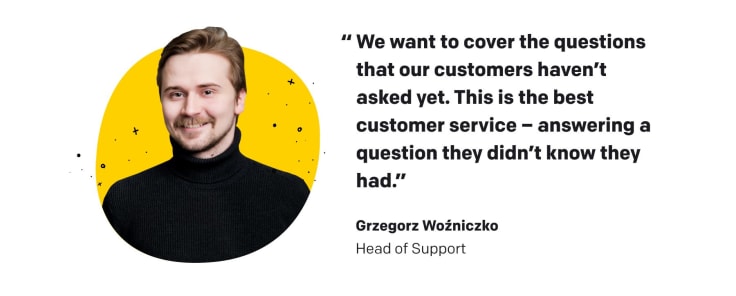
Sending extra vouchers and discount codes or going crazy about Black Friday will not work if you want to position yourself as a high-end brand.
Ordering fast food for a hungry customer stuck in line waiting for a customer service agent is not a great idea if the value you offer is sustainability and environmental friendliness.
Make sure your short-term campaigns and spontaneous gestures match your brand strategy and message.
Do the values you communicate match your values?
You might have all of the above figured out perfectly. Yet your company still doesn’t perform the way you expected.
Important questions: Do you actually believe in the values that you use as brand values? Could you prove it? Are your customer service professionals and marketing team on board with those values?
Putting customer service before profits doesn’t mean spending endless amounts of money with no return on that investment.
If you’re positioning yourself as an eco-friendly brand but your real priority is high profits and a Wall Street IPO, customers will sense that through your actions. Your decisions and actions won’t always be sustainable, and no one likes hypocritical brands.
If your brand is supposed to serve elderly people and you communicate a mission of helping older generations through science and technology, but these two matter to you more than elderly people themselves, at some point you’ll go too far and your audience won’t understand you. That’s betrayal too.
It’s not about adjusting your communication and personality to the customers’ expectations. It is about being clear and confident about your own mission and finding customers you can share it with.
Key takeaways
The world would be a simpler place if smiling and giving away free stuff were enough for businesses to get ahead.
They’re not.
Worse, your competitors are right now doing research on your customers with the intention of serving them better than you are. To build up a customer service shield and protect your business, keep the following in mind:
- No two customer service strategies will look alike. If you look exactly like another company, you’ll just confuse consumers.
- Put customer service before profits, but that doesn’t mean spending endless amounts of money with no return on investment.
- Get in the heads of your customers - that means doing market research, asking hard questions, and listening closely to the answers.
Get a glimpse into the future of business communication with digital natives.
Get the FREE report








Comments